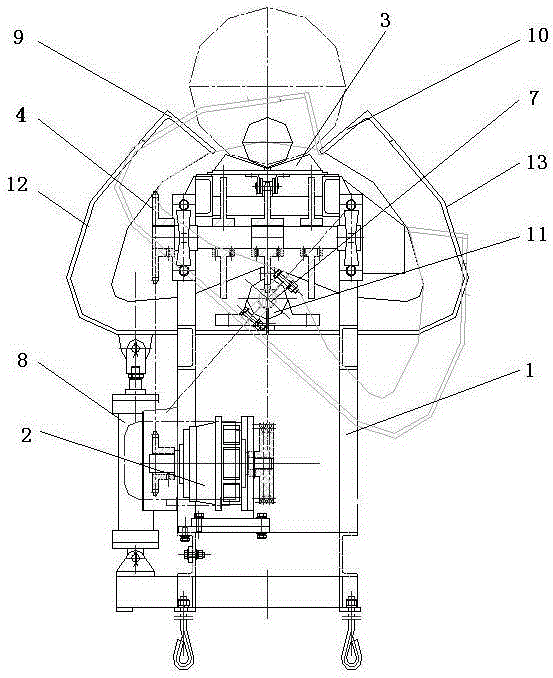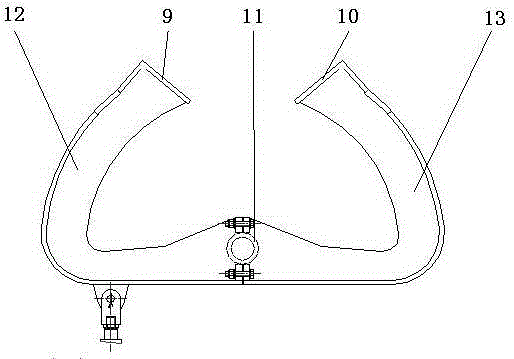Log automatic stacking device
A log, moving motor technology, applied in transportation and packaging, conveyor objects, roller tables, etc., can solve the problems of high labor intensity of operators, inability to meet modern production, slow stacking speed, etc., to achieve low labor intensity and structure. Novel, fast stacking effect
- Summary
- Abstract
- Description
- Claims
- Application Information
AI Technical Summary
Problems solved by technology
Method used
Image
Examples
Embodiment Construction
[0012] Below in conjunction with accompanying drawing, the present invention is further described:
[0013] As shown in the drawings, an automatic log stacking device is characterized in that a frame 1 is provided, and a linear moving device and a turning device are arranged on the frame 1. The linear moving device includes a moving motor 2, a supporting wheel 3, The supporting wheel shaft, the driving shaft, the driven shaft, the driving sprocket 4, the driven sprocket 5 and the chain, and the turning device includes a turning frame 6, a turning shaft 7, a turning cylinder 8, an outer turning supporting plate 9 and an inner turning supporting plate 10. Supporting wheel shafts are horizontally arranged on the frame 1 sequentially. One end of the frame 1 is provided with a driving shaft, and the other end is provided with a driven shaft. The supporting wheel shaft is provided with a supporting wheel 3, and the supporting wheel shaft is provided with a sprocket , the driving sha...
PUM
 Login to View More
Login to View More Abstract
Description
Claims
Application Information
 Login to View More
Login to View More - R&D
- Intellectual Property
- Life Sciences
- Materials
- Tech Scout
- Unparalleled Data Quality
- Higher Quality Content
- 60% Fewer Hallucinations
Browse by: Latest US Patents, China's latest patents, Technical Efficacy Thesaurus, Application Domain, Technology Topic, Popular Technical Reports.
© 2025 PatSnap. All rights reserved.Legal|Privacy policy|Modern Slavery Act Transparency Statement|Sitemap|About US| Contact US: help@patsnap.com



